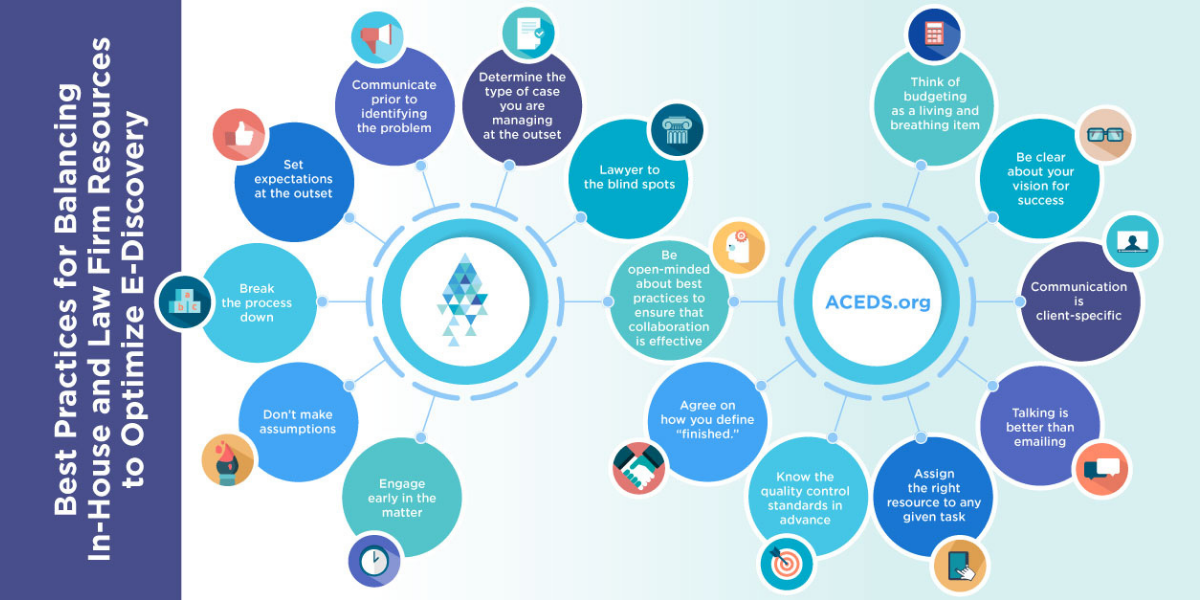In any collaboration between in-house e-discovery teams and law firms, balancing resources is essential to effectively support client outcomes. On August 17, 2021, ACEDS Global Advisory Board Chair Ari Kaplan moderated a roundtable discussion on this holistic process and best practices for improving communication between in-house teams and law firms, vendors, or outside counsel. The goal of this live discussion was to share perspective and offer a balanced view of how in-house teams can collaborate with law firms to offer the greatest value to their respective clients.
ACEDS Global Advisory Board member, Amy Sellars, Associate General Counsel and Director of Cardinal Health’s Discovery Center of Excellence, suggested setting expectations and being specific early on. Everyone should agree on how each organization collects, stores, and processes ESI.
According to Clinton Sanko, Shareholder at Baker Donelson, the first step in a new project is determining whether a case is standard or extraordinary. If it is familiar, use existing processes and resources. For extraordinary matters, engage early in partnership between in-house discovery teams of the client and the law firm. Look for blind spots that do not have a process built and lawyer to those matters.
Susan Jackson, Legal Counsel for Commercial, Trade, and Information Governance matters at Novelis Corporation, and a member of the ACEDS Global Advisory Board, stressed the importance of involving all parties in any decision and in each conversation. With an open mind and a proactive attitude, all of the parties can effectively manage a project.
After highlighting the need for early communication, the guests discussed where things to go wrong and when there is a disconnect. Sellars drew inspiration from George Bernard Shaw, answering that the “greatest problem with communication is the illusion that is has occurred.” Asking the right questions and setting a timeline allows everyone to understand how tasks will get done. It also sets an expectation for the meaning of “finished.” The panel agreed that direct conversation is often more effective than email and suggested that weekly interaction is ideal.
When asked for best practices to approach conflict and differing viewpoints between parties in an e-discovery project, Sanko suggested that conflict should be viewed as constructive since it reflects that everyone involved in the project is engaged and cares about the outcome.
This conversation offered an insightful look at how resources and responsibilities are distributed in a collaborative e-discovery project, with a particular focus on the value of early communication and resource allocation to effectively reveal blind spots. Download an infographic of the key takeaways and tips from “Balancing In-House and Law Firm Resources to Optimize E-Discovery.”
Join ACEDS for future educational discussions by registering for upcoming events and subscribe to our blog for weekly e-discovery content.


